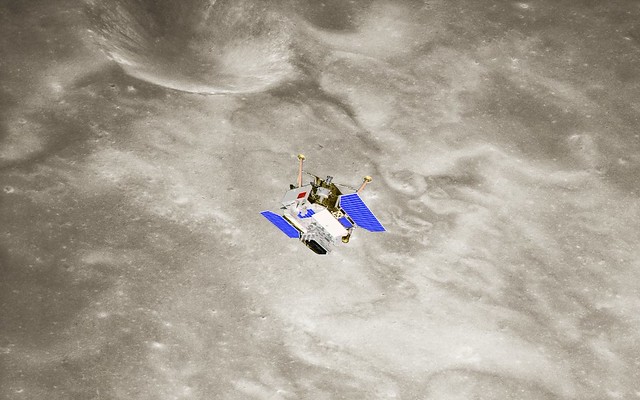 |
| Chang'e-3 was slowed into an 100 x 100 km retrograde orbit around the Moon by 0953 UT, Friday, December 6, 2013. Engine cut-off ended a well-planned and executed 361 second firing sequence that brought to conclusion an approximately 112 hour trans-lunar coast. China's third unmanned lunar mission since 2007 was launched directly into trans-lunar trajectory from Xichang Satellite Center at 1730 UT, Sunday December 1 (1:30 am Beijing time, Monday morning, December 2). Looking forward, orbital maneuvers are planned that will eventually reduce the lowest altitude of the Chang'e-3's orbit to within 16 km over Sinus Iridum at local sunrise, December 14. Chang'e-3 is expected to perform the first soft-landing on the lunar surface in the 21st century; the first of the millennium and first since the Soviet Union's Luna 24 sampling mission of 1976. Chang'e-3 is designed also to deploy the remotely-controlled lunar rover Yutu, the first since the Soviet Lunokhod 2 of 1973, on or after Saturday, December 14 (in China). Terminal velocity and landing, with engine cut-off 4 meters over the pulverized surface of Sinus Iridum, is expected after local sunrise immediately southeast of Laplace A crater [Lunar Pioneer]. |
The probe was slowed into lunar orbit by a 361 second precise burn of the vehicle's variable thrust engines, following commands uploaded by ground controllers at BACC, as it flew over the Moon's farside .
The center later verified Chang'e-3 had entered a 100 km-high, nearly circular orbit around the Moon.
Launched at 1730, Sunday (UT) from southwest China's Xichang Satellite Center, Chang'e-3 is set to be soft-landed on the Moon near the contact zone between Mare Imbrium and Sinus Iridum, near Laplace A crater, soon after the sunrise terminator sweeps over the selected landing zone, after December 14..

No comments:
Post a Comment